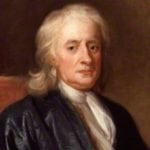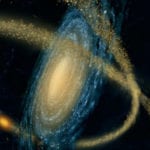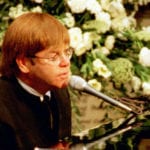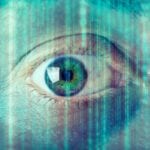 Technology
Technology  Technology
Technology  Humans
Humans 10 Everyday Human Behaviors That Are Actually Survival Instincts
 Animals
Animals 10 Animals That Humiliated and Harmed Historical Leaders
 History
History 10 Most Influential Protests in Modern History
 Creepy
Creepy 10 More Representations of Death from Myth, Legend, and Folktale
 Technology
Technology 10 Scientific Breakthroughs of 2025 That’ll Change Everything
 Our World
Our World 10 Ways Icelandic Culture Makes Other Countries Look Boring
 Misconceptions
Misconceptions 10 Common Misconceptions About the Victorian Era
 Mysteries
Mysteries 10 Strange Unexplained Mysteries of 2025
 Miscellaneous
Miscellaneous 10 of History’s Most Bell-Ringing Finishing Moves
 Technology
Technology Top 10 Everyday Tech Buzzwords That Hide a Darker Past
 Humans
Humans 10 Everyday Human Behaviors That Are Actually Survival Instincts
 Animals
Animals 10 Animals That Humiliated and Harmed Historical Leaders
Who's Behind Listverse?

Jamie Frater
Head Editor
Jamie founded Listverse due to an insatiable desire to share fascinating, obscure, and bizarre facts. He has been a guest speaker on numerous national radio and television stations and is a five time published author.
More About Us History
History 10 Most Influential Protests in Modern History
 Creepy
Creepy 10 More Representations of Death from Myth, Legend, and Folktale
 Technology
Technology 10 Scientific Breakthroughs of 2025 That’ll Change Everything
 Our World
Our World 10 Ways Icelandic Culture Makes Other Countries Look Boring
 Misconceptions
Misconceptions 10 Common Misconceptions About the Victorian Era
 Mysteries
Mysteries 10 Strange Unexplained Mysteries of 2025
 Miscellaneous
Miscellaneous 10 of History’s Most Bell-Ringing Finishing Moves
10 Inspiring Stories Of People Who Turned Tragedy Into Triumph
Everyone responds to tragedy differently. Some give up, some curse God, and some amaze us with their resilience. Not everyone is tested. But for those who are, the following people are models on how to turn disaster into success.
10Todd And Shelly Schupbach

After almost giving up on getting pregnant, Shelly Schupbach and her husband, Todd, were blessed with a smiling baby boy, Nash. Their lives were filled with the joy of baby firsts. Then on June 19, 2014, Shelly dropped off her precious five-month-old son at the babysitter’s while she went to work. That was the last time she saw him alive.
Todd and Shelly received phone calls at work telling them that Nash had stopped breathing in his sleep. At the hospital, the nurses gave CPR until Shelly was willing to let go. “As a mother, you just want to hold him, and rock him, and tell him it’s going to be okay,” said Shelly. “It was the hardest day of my life.”
Later, the death certificate delivered another crushing blow. The cause of death was positional asphyxia. As Shelly wrote on her blog: “My worst nightmare confirmed. He suffered. It was preventable. I dropped him off at the place that would take his life. I smiled at him, and he smiled back, and I walked away not knowing that decision would change my life forever.”
But Shelly and Todd didn’t want their son’s legacy to be one of sadness. Nash was the baby with the gigantic smile who spread joy to everyone who knew him.
As Nash’s six-month birthday approached on July 9, 2014, family members decided to honor him by doing random acts of kindness in his name. They agreed to do that on the ninth of every month at least until his first birthday. With each act of kindness, they would hand out a card with the baby’s picture and the words “Have a Nash day.”
The idea took off on social media, and soon people all over the US were participating in “Have a Nash day.” Then someone in Spain posted, and the Schupbachs realized it had gone international. Now, Shelly’s excited about Nash’s birthday again because of all the people who are honoring her son.
9Allan Buchmann
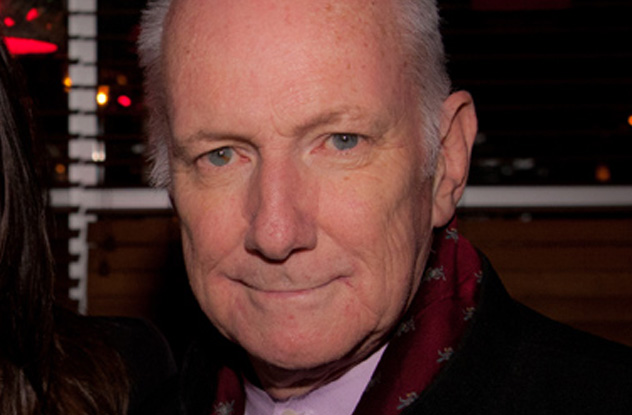
Allan Buchmann lost his 19-year-old daughter, Chitra, to an eating disorder and other addictions. He believes she could have been saved with the proper professional help. According to Buchmann, his daughter was also denied artistic opportunities as a producer in theater because she was a woman.
To honor his daughter’s memory and to give other women the opportunities that Chitra lacked, Allan founded the Culture Project in 1996. His mission is to support women artists who use theater to explore social issues, including women’s issues and human rights.
Allan’s goal, to become the foremost presenter of new work by women, took a huge leap forward when the Culture Project theater in New York City was renamed the Lynn Redgrave Theater in 2013 after the late actress. The christening attracted noted actors such as Kevin Bacon, Kyra Sedgwick, Trudie Styler, and Vanessa Redgrave.
“We are looking for women’s voices that really affect our future, voices that are promising and unique and that, with the right kind of nurturing and exposure, can fulfill their promise for the betterment of life,” said Allan. “I believe that creating this stage for women is what my daughter would have wanted me to do.”
8Sharon Everett

One day in July 2000, Sharon Everett, a 51-year-old wife and mother from Fort Thomas, Kentucky, was returning home from the grocery store. Unknown to Sharon, pool chemicals in the shopping bags behind the driver’s seat had leaked into other products she was bringing home. As she turned into her driveway, the interior of her car exploded into flames.
By the time firefighters got her out of the car, almost 60 percent of her body was covered with third-degree burns. Her ears, eyelids, lips, nose, and hair were destroyed.
Sharon doesn’t remember the fire. But her husband and five adult children remember her five-month, drug-induced coma and how emotionally overwhelming it was to take care of her when she finally came home seven months later.
Through it all, Sharon remained strong and uncomplaining. She had the loving support of her family and her community. But still, as her daughter, Katie, explained, “You feel so helpless, like you’re the only ones who’ve ever been through this traumatic injury.”
Katie learned of the Phoenix Society, a support organization in Grand Rapids, Michigan for burn patients. She urged Sharon and the rest of the family to go to the society’s 2001 World Burn Congress. There, Sharon met other burn survivors who were living amazing, happy lives.
She began to volunteer at her hospital’s burn clinic and provide sensitivity training to people who interact with burn survivors. In 2011, Sharon and her husband, George, received the Harman Award for outstanding leadership in support of the Phoenix Society.
Sharon still has her down days. But as she counsels other burn survivors, “Your life may be changed, but it’s not over. And in some ways, it’s going to be so much better than it was before.”
7Steve James
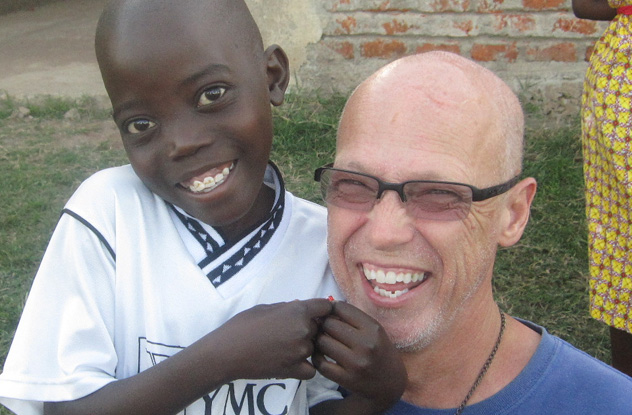
Steve James was inspired by the generosity of his daughter, Brittney. In 1998, then-16-year-old Brittney chose to sponsor a Kenyan boy, Newton, through the Christian Children’s Fund. She hoped one day to meet the young boy in person. But she never made it to Kenya. In 2001, Brittney was discovered dead in her apartment. She was only 19.
To honor her memory, Steve went to Kenya to meet Newton six months later. He also gathered supplies and medical equipment to take on his trip. As a certified registered nurse anesthetist, Steve wanted to use his medical skills to help Kenyan patients.
But he wasn’t prepared for the scope of the suffering he encountered. When he returned to the US, he told everyone about the problem of unmet medical needs in Kenya. Steve and his wife, Greta, founded Kenya Relief to help.
“There were times when we would pass out medicine from the back of a van,” remembers Steve. “On one trip, we saw 800 patients a day, a total of 2,400 people . . . Unfortunately, we were unable to fully care for them because of limited resources.”
A decade later, James and his team created Brittney’s Home of Grace, a 60-acre orphanage outside of Migori, Kenya. Dozens of children are cared for there. Even adults receive medical care. Kenya Relief kept expanding with separate dormitories for boys and girls, a library, a cafeteria, and more. Steve was also determined to build a school and a hospital.
“There’s no better place to leave a legacy than Kenya,” said Steve. It’s a sure bet that his daughter would agree.
6Katherine Pearson & Ryan Dawson
As a member of the Lenoir County Special Response Team (SRT) in North Carolina, Detective Allen Pearson responded on April 9, 2009, to a report of an unknown suspect shooting a gun at homes. The suspect, who was later identified as Doug Phillips, had murdered his girlfriend the previous day at another location. In Lenoir County, he escaped into a nearby woods, where he was surrounded by SRT members. Phillips fired an unprovoked shot that killed Detective Pearson. During the ensuing gun battle, Phillips was shot and killed as well.
Detective Pearson, 29, had also been a volunteer firefighter and was at that time the only Lenoir County sheriff’s deputy to have been killed by gunfire in the line of duty. Posthumously, he received the Law Enforcement Purple Heart and Medal of Valor for his sacrifice.
But Detective Pearson’s widow, Katherine, and his partner, Detective Ryan Dawson, were determined to use the man’s memory for good. They helped to create the Allen Pearson Emergency Services Foundation, which raises money for new equipment to help emergency services protect their communities. It’s a way of preserving Detective Pearson’s legacy. “We know we need to keep his name alive,” said Katherine Pearson. “We know we need to keep his memory alive and everything that he worked so hard for.”
5Alison Cain & Michael Rosenthal
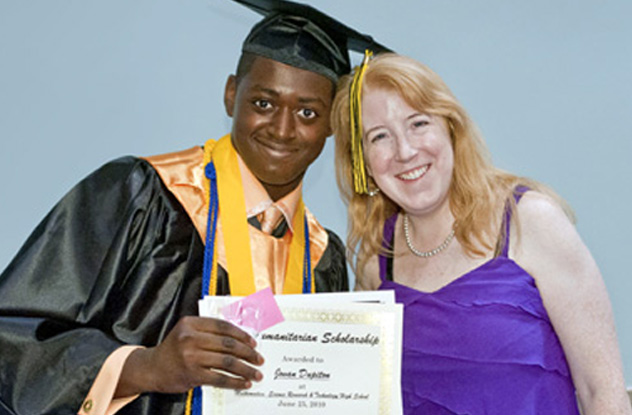
Alison Cain and Michael Rosenthal were teachers at Mathematics, Science Research, and Technology HS in Queens, New York. The two of them created separate annual scholarships to honor their heroes.
Alison’s scholarship, the Humanitarian Award, goes to the high school student “who has gone above and beyond to be kind to others and to be a good citizen in the school community.” Alison knows what it’s like to be on the receiving end of such kindness. In 2004, after only five years as a teacher, she got the double lung transplant that saved her life. Afterward, she also received a letter from the donor’s family describing their loved one as someone “who always went above and beyond to give of herself.” When their courageous, young family member learned she would soon die, she decided to donate her organs to a complete stranger and give the gift of life.
The other teacher, Michael Rosenthal, established the Daniel P. Rosenthal Memorial Award in honor of his older brother. Daniel Rosenthal died at the age of 20 when Pan Am Flight 103 was bombed over Lockerbie, Scotland in 1988. He had been returning to the US for Christmas break with his family. He was studying to become a teacher at Oxford University. Each year, the Daniel P. Rosenthal Memorial Award is given to a worthy student who also intends to become a teacher or study abroad.
4Mark and Suzanne Crotty
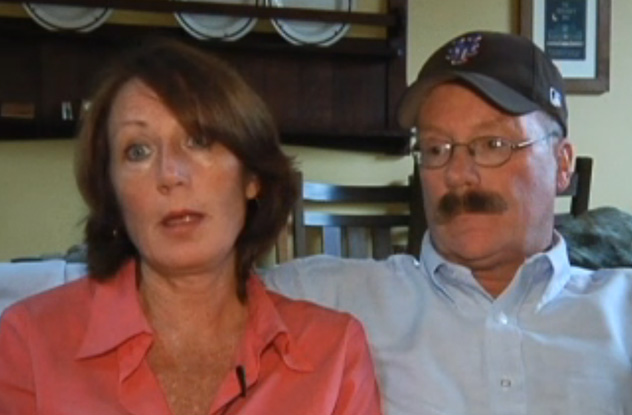
In 2009, 19-year-old Zach Crotty died of an accidental drug overdose in his picture-postcard hometown of Colden, New York. Afterward, his parents, Mark and Suzanne, discovered his journals, detailing his addiction to illegal drugs and prescription painkillers as well as his regret that he wasn’t living the kind of life he’d wanted. He’d been in and out of rehab and had even seen a psychiatrist who prescribed more drugs for this already drug-addicted young man. Prophetically, Zach often wrote that he hoped his journals would save the lives of others, something he couldn’t seem to do for himself.
As a way to help other individuals and families dealing with addiction, the Crottys decided to open up about Zach’s life. It wasn’t easy for them emotionally, but they published his writings on a blog and as a book. “It won’t bring Zach back, but I’ll keep telling Zach’s story, so other people can share it,” said Suzanne Crotty. “Even if we help just one person, we’ve made a difference.”
But the Crottys didn’t stop there. Working with local politicians, they helped to get the I-STOP Act passed in New York. As of March 2015, all New York practitioners (except veterinarians) must issue all prescriptions in electronic format. New York practitioners are already required to consult an online registry of prescription histories for patients before prescribing certain controlled substances. The Crottys hope this law will reduce doctor shopping among addicts, who often lie about their prescriptions to get more drugs.
3Emilie Gossiaux
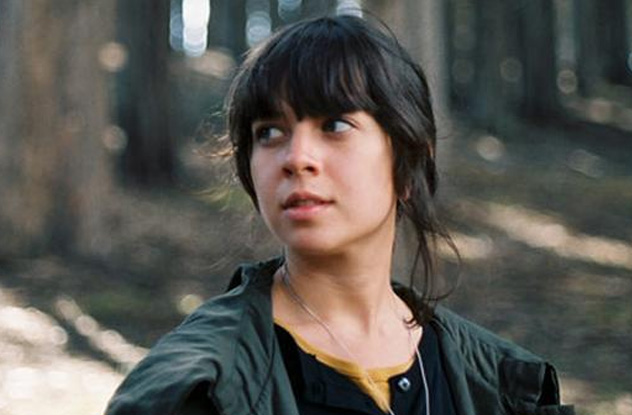
Emilie Gossiaux, 25, is the Helen Keller of the art world. As a little girl in Terrytown, Louisiana, she could see, but she needed a hearing aid in each ear. That just increased her determination to become an artist. In 2007, she was accepted into Manhattan’s Cooper Union School of Art. But she had yet to face her greatest challenge.
On October 8, 2010, an 18-wheel truck hit Emilie in Brooklyn as she bicycled to an art studio where she had an internship. Emilie, then 21, suffered traumatic brain injury, a stroke, and fractures to her head, pelvis, and leg. She was also blinded.
On her second day in the hospital, a nurse told Emilie’s parents that she wouldn’t recover and asked if they wanted to donate her organs. Later that night, Emilie began to move her arm. “You’re telling us to start donating her organs when she started moving her arm?” said her father, Eric Gossiaux. “I don’t think so.”
Then the doctors said that Emilie wasn’t a candidate for rehab. They told her parents to find a nursing home. This time, it was her devoted boyfriend, Alan Lundgard, who wouldn’t accept the prognosis. He researched communication methods until he found the print-on-palm technique. Similar to how Annie Sullivan communicated with Helen Keller, Alan drew the letters I l-o-v-e y-o-u with his finger on Emilie’s palm. She responded immediately. Shortly after, her right hearing aid was inserted, and her personality came back instantly. She persevered through a difficult rehabilitation.
Finally, in the spring of 2013, Emilie returned to Cooper Union to finish her undergraduate degree. Even more impressive, she won an Award of Excellence from the Kennedy Center for the Performing Arts a few months later. It was for her sculpture Bird Sitting, which she created two years after the accident that blinded her. Her sculpture was also included in the In/finite Earth exhibition at the Smithsonian Institution in 2013.
2Matt Gage

On a sweltering day in his small Iowa town, Matt Gage dove into a pool. When he surfaced, his entire left side was useless.
Fortunately, the nine-year-old’s cousin was there to pull him from the water. At the hospital, the doctor diagnosed heat stroke. But after being transferred to the Mayo Clinic, Matt was whisked into emergency surgery with a different diagnosis, the kind usually reserved for the elderly. Matt had suffered not just heatstroke but an actual a stroke.
The prognosis was grim. The neurosurgeon didn’t expect Matt to wake up. If he did, he’d be a vegetable.
But Matt did wake up. The neurosurgeon told Matt he’d never be able to move his left side again. With the young boy’s dream of becoming the next Michael Jordan destroyed, he ignored his father’s urging to try to move his leg. “I can’t,” Matt would say.
Finally, his father confronted him. “Matt, what did ‘can’t’ ever do for you?” his father said. “If you say you can’t do it, you’re not gonna do it. If you don’t start believing in yourself and believing something can happen, that you can get better, then you’re gonna be in a wheelchair.”
He began to make progress. First, he moved his left leg. Then he moved his left arm. He started walking with a brace before leaving the hospital.
Although his left side had a limited range of motion, Matt eventually played basketball, ran a 5K, and even took up skiing. He became a professor and athletic trainer for various universities. He now gives hope to other young stroke victims and their families by showing them that they, too, can get married, have kids, and enjoy successful careers.
Matt believes God used his stroke to help others. If he could relive the moment that changed his life, he says, “Now, today, I would tell you that I wouldn’t want it any different.”
1Marguerite Barankitse

Marguerite “Maggie” Barankitse’s harrowing journey began in October 1993. In her country of Burundi, tensions had heated to a boiling point between the two major ethnic groups, the Hutus and the Tutsis. Maggie, a Tutsi, went to the house of the Archbishop of Ruyigi for safety. She tried to protect her seven children as well as 72 Hutu friends and their children. But Tutsi rebels invaded the building.
They tied her to a chair then stripped her. They wouldn’t kill her because she was a Tutsi. But they did murder the 72 Hutus in front of her and threw her best friend’s head into her lap.
Maggie paid a small ransom to save 25 of her friends’ children. Her own seven children also survived. With no resources and so many children to care for, Maggie set about finding a solution. Soon, she had 200 children to feed, clothe, and house. She asked everyone for food and land.
Eventually, she founded Maison Shalom (“House of Peace”) in Ruyigi for both Hutu and Tutsi orphans. It grew from one home to a compound with over 3,000 homes plus schools, farms, a hospital, and even a bank. In the last 20 years, Maison Shalom has provided a safe, loving home to over 20,000 children. Maggie wants the children to be educated so they’ll have better lives. But she also works to successfully reintegrate them into the outside community.
“I know I can die in peace now,” says Maggie, “because my children will continue to pass on the message of peace and love wherever they are.”

